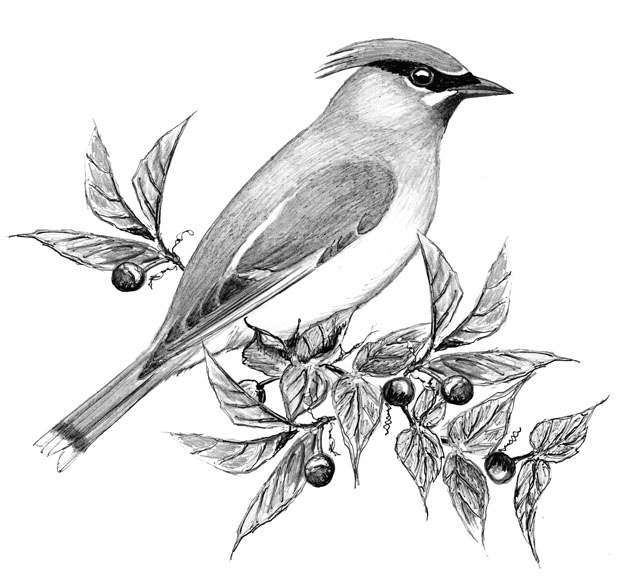
Dear Bird Folks,
A bird just hit my window and it appears to be bleeding quite badly. Could you please come to this address (address removed for security reasons) and help the poor bird? And while you are here, maybe you could also tell me what kind of bird it is.
– Karen, Orleans, MA
Not really, Karen,
I can go to your house and identify the bird, but technically I’m not supposed to handle an injured bird (plus I pass out at the sight of blood). For help with injured birds you will need to contact a licensed wildlife rehabilitator (like those wonderful people who work at nearby Wild Care). However, your address looks familiar to me, so as soon as I can get someone to watch the cash register, I’ll be there. In the meantime, keep an eye on the bird, but don’t give it CPR or mouth-to-beak. None of that will help.
Ha! Now I know why your address is so familiar to me. You live in my house, and you are the wife I’ve written so much about. Talk about coincidences. The bird you dragged me out of work to see is a Cedar Waxwing. My question to you is: how does my wife not know a Cedar Waxwing when she sees one? Aren’t you paying attention while I’m identifying the birds that fly past the car as we are driving down the road? Oh right, you are probably too busy trying to watch the road. I guess somebody has to.
Here’s some good news. The waxwing eventually flew away. It also wasn’t “bleeding quite badly.” In fact, it wasn’t bleeding at all. The waxwing merely spit up some juice from the berries it was eating before your window got in its way. (I could ask you why you don’t know the difference between blood and berry juice, but I think I’m in enough trouble.) Windows are a big problem for all birds, but especially for waxwings. Eighty-five percent of a waxwing’s diet consists of fruit (which is why we rarely see waxwings with scurvy). But while fresh fruit is a good thing, fermented fruit can cause problems, including inebriation. Though they won’t admit it, waxwings have a problem with public drunkenness. And the only thing worse than driving drunk, is flying drunk. Birds have been known to actually fly while they are under the influence (just like those pilots from Northwest Airlines).
Waxwings are like frat brothers; they do everything together. Even during the breeding season waxwings spend the day politely feeding together. Drop a piece of food in front of a flock of gulls and they’ll all pounce on it like it’s a fumble. Waxwings, on the other hand, are gracious birds and have an organized feeding system worked out. Some birds will eat, while others respectfully wait their turn. Besides that, waxwings have one of the most charming feeding behaviors exhibited by any group of creatures anywhere. They will actually line up on a branch and pass a berry all the way down the line, from one bird to the next. The bird at the end of the line might eat a berry that was touched by the beaks of a dozen birds ahead of it. It’s really cool to see, but it totally creeps out the germaphobes.
Considering the amount of old fruit waxwings eat, you may think they’d be drunk all the time, but they have actually evolved to deal with it. The birds have shorter intestines (don’t ask me who measured them), process fruit more quickly. They also have larger livers to help reduce the effects of the alcohol. (My old man could have used one of those.) But sometimes the liver can’t keep up with the intake. When fermented fruit is too plentiful, the birds will not only gorge themselves, but they’ll store extra fruit in their throats (which is likely the “blood” you saw spit out on your deck). When the fruit overload is more than their livers can take the birds become blitzed. Like all drunks, waxwings in this condition make bad decisions and one of them is not properly avoiding windows. One year a customer carried in a bucket containing at least ten dead waxwings. Sadly, all of them had hit his window at the same time. Waxwings would clearly benefit from hiring a designated flyer.
Intoxication aside, the waxwings’ fruit diet has several advantages. Many songbirds have to make the long, dangerous migration south when insects become scarce, but as long as waxwings can find berries to eat they can stay here year-round. In addition, their special diet makes waxwings less likely to become victims of parasitic cowbirds. Baby cowbirds expect to be fed delicious insects by their host parents, but when they receive nothing but a steady stream of fruit, they don’t do so well and end up…well, you know.
The name “waxwing” comes from the red, waxy tips the birds have on some feathers. No one knows the purpose of these waxy tips, but some experts believe it has something to do with mate attraction (which is what they always say when they don’t have a better answer). Here’s something else odd about waxwings. They typically have a bright yellow band on the ends of their tails, but here in the Northeast we sometimes see birds with orange bands. This is likely the result of the birds feeding on a variety of berries that are common here. In this case, birds really are what they eat.
There really isn’t much we can do to prevent waxwings from becoming intoxicated, Karen. It’s all part of nature, just like eating certain berries can change the color of their plumage. Hey, you know, I’ve been eating a lot of gray berries lately. Maybe that explains what’s going on with my plumage.